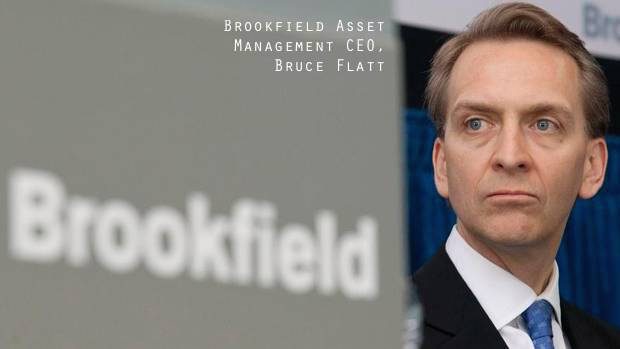by Marissa Blankenship, Allianz Global Investors
Blockchain technology has surged past cybersecurity, mobile payments and cloud computing to become the most innovative new technology in financial-services—and one that is particularly promising for ESG-focused investors, according to Marissa Blankenship.
Disruptive force in finance
It is impossible to follow the financial sector without being bombarded by information about distributed ledger technology (DLT), which is more widely known as "blockchain." Blockchain is the technology which underpins bitcoin and allows participants to share in a single "golden record" without relying on central authorities or intermediaries. It has sprung up from almost nowhere, and as early as two years ago it was largely an absent topic from sell-side research, Bloomberg Intelligence and industry conferences. However, it is now recognized as a potential disruptive force for systems, processes and infrastructures used to settle and record financial transactions. To that point, financial and technology companies are investing greater than $1 billion in 2016, and these companies have already spent over $900 million in the past 36 months according to Magister Advisors.
In the past two years, in terms of financial innovation, blockchain has surged past cybersecurity, peer-to-peer lending, mobile payments and cloud computing, and it is being touted as the best revolutionary idea since the internet. What is driving such attention is that blockchain's transaction ledger database with cryptographic integrity is shared by all parties
[Tweet "Blockchain is disruptive to current systems used to settle financial transactions"]in a distribution network, and every transaction that occurs in the network is recorded and stored by creating an irrevocable and auditable transaction history.
The fact that every business has a ledger means that the potential scale and application of DLT is far-reaching and could easily evolve into areas that are not yet in a pilot phase. In addition to diversified financials (stock exchanges, banks and asset managers), pilot applications of DLT include e-commerce and manufacturing, supply chain management and health care. Intermediaries such as custodians, clearing houses and financial-messaging services can be seen at most risk of disruption, and are joining consortiums such as R3, a financial innovation firm that leads a partnership with over 50 of the world's leading financial institutions, and Hyperledger, which consists of banks, exchanges, post-trade and other technology companies and consultants to invest in research, design and engineering of pilot applications.
Blockchain start-ups
In addition to banks, venture capital is also active and growing globally. According to Outlier Ventures, there are 967 blockchain start-ups as of June 2016, with the US and UK leading the pack, although close to 20% of start-up origins were not disclosed. While still dwarfed by the US and UK, financial technology investment in Asia quadruped last year, with venture-capital firms backing blockchain, peer-to-peer lending, online lending, cloud computing and cybersecurity.
Realistically, wide-spread adoption of DLT is 10-plus years away, as vested interests in legacy technology systems will make change costly. The governance of aligning shareholder interests and developing common protocols is also a key challenge, in addition to data privacy, scalability and regulation.
Emerging ESG trends
As the application of blockchain becomes better understood, there are trends emerging from an environmental, social and governance (ESG) perspective. Naturally, there will be an impact on human capital, although it is too early to determine the magnitude. According to Blockchain in Capital Markets: the Prize and the Journey, it is estimated that IT and capital markets currently cost banks upwards of $150 billion per year, in addition to another $100 billion for post-trade and other market inefficiencies. Banco Santander estimates that with more efficient digital ledgers, about $20 billion in costs could be reduced per year. Further work needs to be done on quantifying both operational costs and savings from blockchain. Human capital would be impacted due to a reduction in operational overheads, as well as cost-sharing across institutions.
The nature of blockchain is such that it is designed to enable trust and cooperation in new and innovative ways. This would be a welcome benefit for financial companies who are still suffering from mistrust post the global financial crisis. For banks, which are under pressure to cut costs due to downward pressure of net interest margin, blockchain can be used to streamline processes and reduce inefficiencies in the capital market infrastructure. Specifically, post-trade settlement, custody, clearing, and international payments are the most named applications. Furthermore, DLT allows for more transparency for regulators on transaction history and can enhance monitoring, know-your-client and anti-money-laundering processes.
Stock exchanges are working on industry-changing applications by replacing
[Tweet "Blockchain is designed to enable trust and cooperation in a new and innovative ways"]central securities depositories and positioning themselves as "digital vaults." This sets them up to build applications that process data for reporting and allow for performance monitoring. Early projects involve providing issuers with real-time access to their share registers and using smart contracts to facilitate corporate actions.
Voting by e-proxy
Nasdaq Tallinn, a leading securities market infrastructure operator in Estonia, is using DLT on a trial basis to facilitate proxy voting, and the National Settlement Depository in Russia has also developed an e-proxy voting system that allows for electronic interaction between securities holders and issuers for the purpose of exchanging information and documents. According to SWIFT, a global provider of secure financial messaging services, the proxy voting function has been characterized by non-standard, proprietary processes, with frequent requirements for manual intervention. Proxy voting covers about 85,000 companies each year and is labor intensive for investors as well as their intermediaries, plus it is subject to significant errors and carries a substantial cost. This once-manual process has largely moved to online platforms, but smart contracts would help catch the large proportion of votes that go uncast each year. This was the case in 2014, when Broadbridge reported that over 22 billion retail shares went unvoted in 1,077 US company shareholder meetings from July to December.
In addition to stock exchanges and banks, there are several examples where blockchain would be a positive from an ESG perspective, including providing trade finance facilities, real-estate registration facilities, databases on agricultural receivables and digital assets. Notably, it is possible to use blockchain to help make supply chains more transparent by using digital encryption to create an immutable history of product authenticity and ownership. With respect to conflict minerals and blood diamonds, blockchain usage is being explored, as it would enable compliance with disclosure requirements under the Dodd-Frank Act in the US. In Honduras, blockchain technology is being used to build a land title registry that will help reduce land title fraud, which is a common issue in poorer countries.
The race to production has kicked off, with most large financial institutions already having 10 to 20 blockchain applications in the prototype phase. Yet the overarching hurdle to implementation is achieving the necessary governance, regulation and compliance. This will be aided by having regulators such as the International Organization of Securities Commissions taking the lead in developing harmonized global standards. Assuming these barriers can be scaled, what remains to be considered from an ESG perspective is the trade-off between improved transparency, reduced fraud and corruption, and better management of complex supply chains versus the implied risk to human capital.
Taking all of these factors into account, the buzz and constant chatter about blockchain are quite deserved. Indeed, the opportunity to reduce ESG risks through blockchain applications that increase protection and promote the efficacy of institutions across multiple sectors is a global need.
The material contains the current opinions of the author, which are subject to change without notice. Statements concerning financial market trends are based on current market conditions, which will fluctuate. References to specific securities and issuers are for illustrative purposes only and are not intended to be, and should not be interpreted as, recommendations to purchase or sell such securities. Forecasts and estimates have certain inherent limitations, and are not intended to be relied upon as advice or interpreted as a recommendation.
Copyright © Allianz Global Investors
















